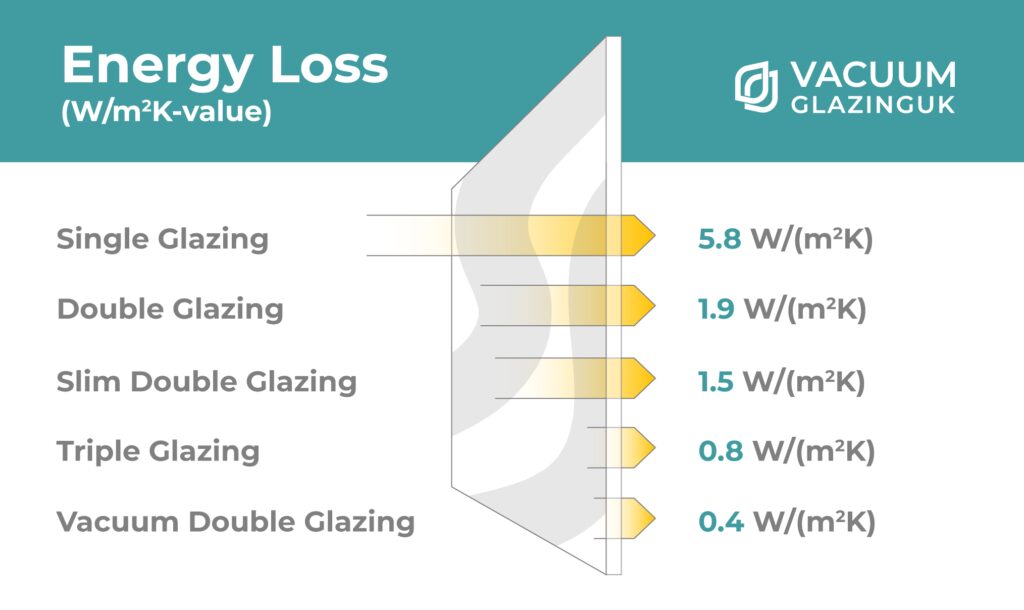Demystifying Double Glazing Values for Energy-Efficient Homes
When it comes to choosing the right double glazing for your windows, understanding key values is crucial to make an informed decision. Double glazing is an energy-efficient solution that not only enhances insulation but also contributes to the overall comfort and energy savings of your home. Let’s delve into the most pertinent values associated with double glazing.
An Overview of Window Values
U-Value (Thermal Transmittance)
The U-value measures the rate of heat transfer through a material. In the context of double glazing, it indicates how much heat escapes through the windows. A lower U-value signifies better insulation, as less heat is lost, leading to improved energy efficiency.

Solar Heat Gain Coefficient (SHGC or G-Value)
The SHGC or G-value represents the amount of solar heat that the glazing allows to pass through. It is crucial for understanding how much sunlight is entering your home. A lower SHGC is beneficial in warmer climates, as it reduces the amount of heat gain, while a higher SHGC is preferable in colder climates to maximise passive solar heating.
Visible Transmittance (VT)
VT measures the amount of visible light that passes through the glass. It is expressed as a percentage, with higher values indicating more natural light. Balancing VT with other factors like SHGC is essential for achieving optimal daylighting and energy efficiency.
Air Leakage (AL)
Air leakage measures the amount of air that passes through the window system. A lower AL value indicates less air infiltration, contributing to improved insulation and energy efficiency.
Sound Transmission Class (STC):
While not strictly an energy-related value, STC is important for those seeking noise reduction. It measures the window’s ability to reduce sound transmission, providing a quieter indoor environment.
Frame Material and Design
The material and design of the window frame also play a crucial role in overall energy efficiency. Different materials, such as vinyl, wood, aluminium, or composite materials, have varying thermal properties and maintenance requirements.
Low-E Coating
Low-emissivity coatings are applied to glass surfaces to reduce heat transfer. These coatings help in maintaining a comfortable indoor temperature by reflecting radiant heat back into the interior during winter and blocking excessive heat during summer.
Understanding these values empowers homeowners to choose double glazing that aligns with their specific needs and the local climate. It’s advisable to consult with professionals to ensure the selection of windows that strike the right balance between energy efficiency, aesthetics, and budget considerations. Invest wisely in double glazing to enjoy a more comfortable, energy-efficient, and sustainable home.
Comparing Double Glazing Options
In the realm of energy-efficient windows, the choice between standard double glazing, triple glazing, and vacuum glazing is pivotal. Let’s explore the distinctions:
1. Standard Double Glazing:
- U-Value: Moderate insulation with a typical U-value.
- SHGC: Balanced solar heat gain.
- VT: Allows natural light with standard visible transmittance.
- AL: Standard air leakage.
- STC: Basic sound reduction.
2. Triple Glazing:
- U-Value: Enhanced insulation with a lower U-value.
- SHGC: Further control over solar heat gain.
- VT: Slightly reduced visible transmittance.
- AL: Improved air leakage performance.
- STC: Better sound reduction compared to standard double glazing.
3. Vacuum Glazing:
- U-Value: Superior insulation with an extremely low U-value.
- SHGC: Controlled solar heat gain for optimal efficiency.
- VT: Maintains decent visible transmittance.
- AL: Minimal air leakage, providing excellent insulation.
- STC: Comparable or superior sound reduction.

Choosing among these options involves balancing factors like insulation, solar heat gain, visible light, and sound reduction based on specific needs and regional climate. Consultation with professionals ensures a well-informed decision for an energy-efficient and comfortable home.
Explore our windows with vacuum glazing – the Frontier Range.
Conclusion
In conclusion, navigating the landscape of double glazing values is a crucial step toward creating an energy-efficient, comfortable, and sustainable home. Armed with insights into U-values, solar heat gain coefficients, visible transmittance, air leakage, sound transmission class, and frame considerations, homeowners can make informed decisions. Moreover, the comparison of standard double glazing, triple glazing, and vacuum glazing sheds light on nuanced choices. Striking the right balance between energy efficiency, aesthetics, and budget considerations ensures a wise investment in double glazing, promising a harmonious blend of comfort and sustainability for years to come.